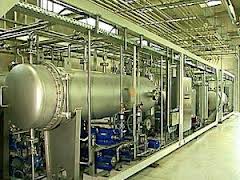Transport costs remain a barrier to export growth
Transport costs remain a barrier to export growth
High transport costs remain one of the main barriers for Laos in its efforts to boost export growth, according to a recently released case study.
A researcher from the National Economic and Trade Research Institute, Mr Chanphasouk Vidavong, presented a case study on the impacts of trade costs and export specifications at a forum held in Vientiane last week. His study showed that the cost of transport in Laos continues to be an obstacle for export trade.
The forum was designed to provide opportunities for economics and trade researchers to present their findings and make recommendations for policy makers so they can build a sound investment policy.
The case study recommended that the government should invest more in road network expansion and the improvement of infrastructure. This would reduce the cost of transport, attract foreign investment in the manufacturing sector and boost export growth.
The study backs the government's efforts to turn Laos from a landlocked country into a land link, which would make it easier for Lao manufacturers to export goods to the world market.
In recent years, Laos has built a number of strategic roads, including Road No. 9 in Savannakhet province, linking Vietnam and Thailand, and the R3 road linking Thailand and China. Laos has also built other roads linking the north-eastern and southern provinces with the Vietnam border.
But business operators say the cost of transporting goods in and out of Laos to seaports is still high.
The government plans to borrow US$7 billion from the Chinese EXIM bank to fund the construction of a railway from the Laos-China border to Vientiane. The loan negotiation is expected to be finalised in the near future and construction is set to start early next year.
The study also recommends that the government lay down sound policies to boost investment in the non-resource sector to ensure sustainable growth of the economy. At present, the economy relies on the export of natural resources, mostly in the form of minerals.
The report suggests that the government continue to develop the garment industry , as it not only creates job opportunities but also generates foreign exchange. The export value of goods produced by the garment industry has exceeded US$100 million to date.
Laos is also encouraging the establishment of industrial tree plantation s and a wood processing industry. The demand for wooden furniture in China is high, but increasing exports of finished timber products is hampered by the shortage of skilled labour.
To establish an export-led economy, Laos also needs to facilitate investment in the processing of agricultural commodities since the country has plenty of fertile land on which the raw materials can be grown.
Laos also has the potential to set up plants for electronic goods assembly, the study shows.
vientiane times














